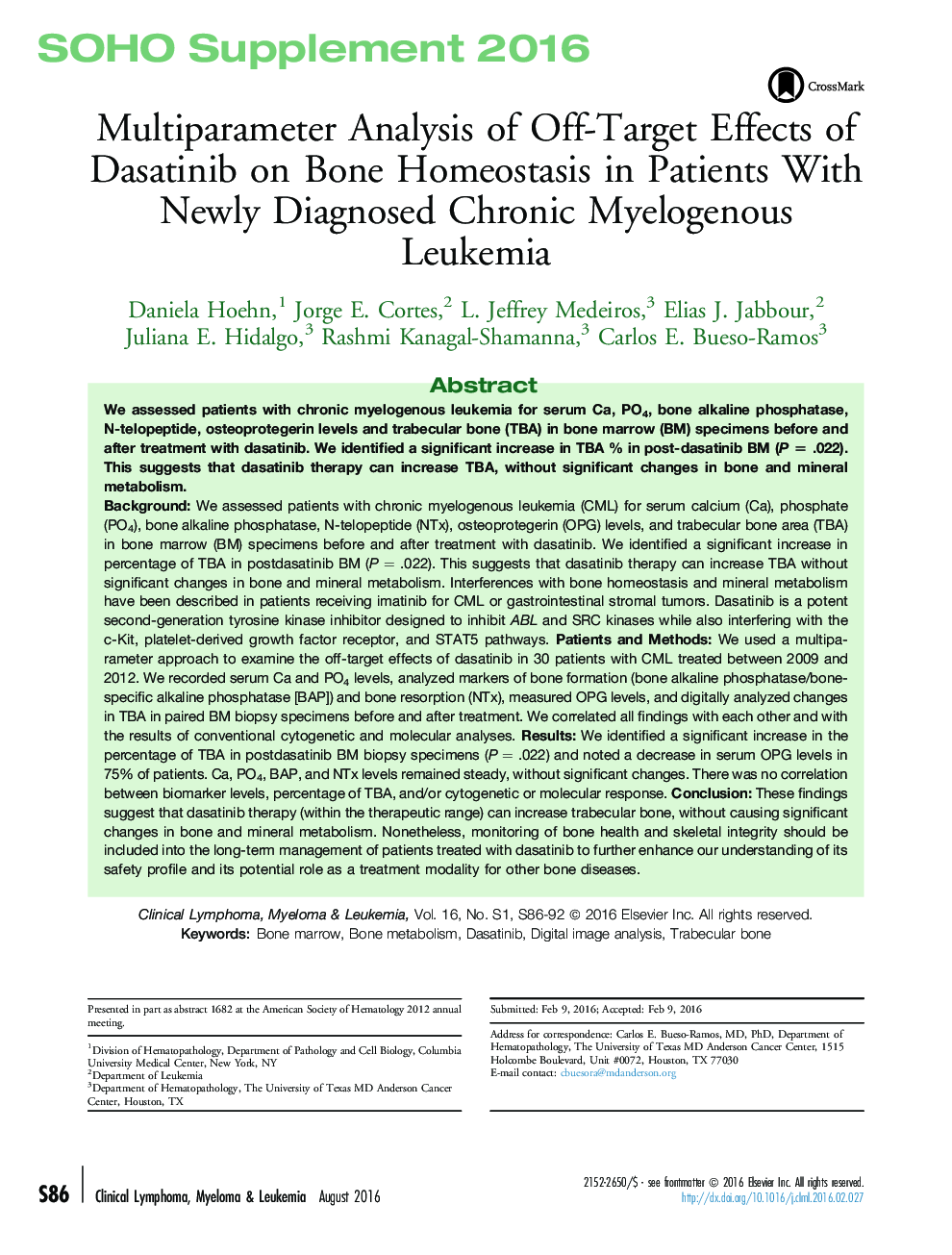| Article ID | Journal | Published Year | Pages | File Type |
|---|---|---|---|---|
| 2754410 | Clinical Lymphoma Myeloma and Leukemia | 2016 | 7 Pages |
BackgroundWe assessed patients with chronic myelogenous leukemia (CML) for serum calcium (Ca), phosphate (PO4), bone alkaline phosphatase, N-telopeptide (NTx), osteoprotegerin (OPG) levels, and trabecular bone area (TBA) in bone marrow (BM) specimens before and after treatment with dasatinib. We identified a significant increase in percentage of TBA in postdasatinib BM (P = .022). This suggests that dasatinib therapy can increase TBA without significant changes in bone and mineral metabolism. Interferences with bone homeostasis and mineral metabolism have been described in patients receiving imatinib for CML or gastrointestinal stromal tumors. Dasatinib is a potent second-generation tyrosine kinase inhibitor designed to inhibit ABL and SRC kinases while also interfering with the c-Kit, platelet-derived growth factor receptor, and STAT5 pathways.Patients and MethodsWe used a multiparameter approach to examine the off-target effects of dasatinib in 30 patients with CML treated between 2009 and 2012. We recorded serum Ca and PO4 levels, analyzed markers of bone formation (bone alkaline phosphatase/bone-specific alkaline phosphatase [BAP]) and bone resorption (NTx), measured OPG levels, and digitally analyzed changes in TBA in paired BM biopsy specimens before and after treatment. We correlated all findings with each other and with the results of conventional cytogenetic and molecular analyses.ResultsWe identified a significant increase in the percentage of TBA in postdasatinib BM biopsy specimens (P = .022) and noted a decrease in serum OPG levels in 75% of patients. Ca, PO4, BAP, and NTx levels remained steady, without significant changes. There was no correlation between biomarker levels, percentage of TBA, and/or cytogenetic or molecular response.ConclusionThese findings suggest that dasatinib therapy (within the therapeutic range) can increase trabecular bone, without causing significant changes in bone and mineral metabolism. Nonetheless, monitoring of bone health and skeletal integrity should be included into the long-term management of patients treated with dasatinib to further enhance our understanding of its safety profile and its potential role as a treatment modality for other bone diseases.
